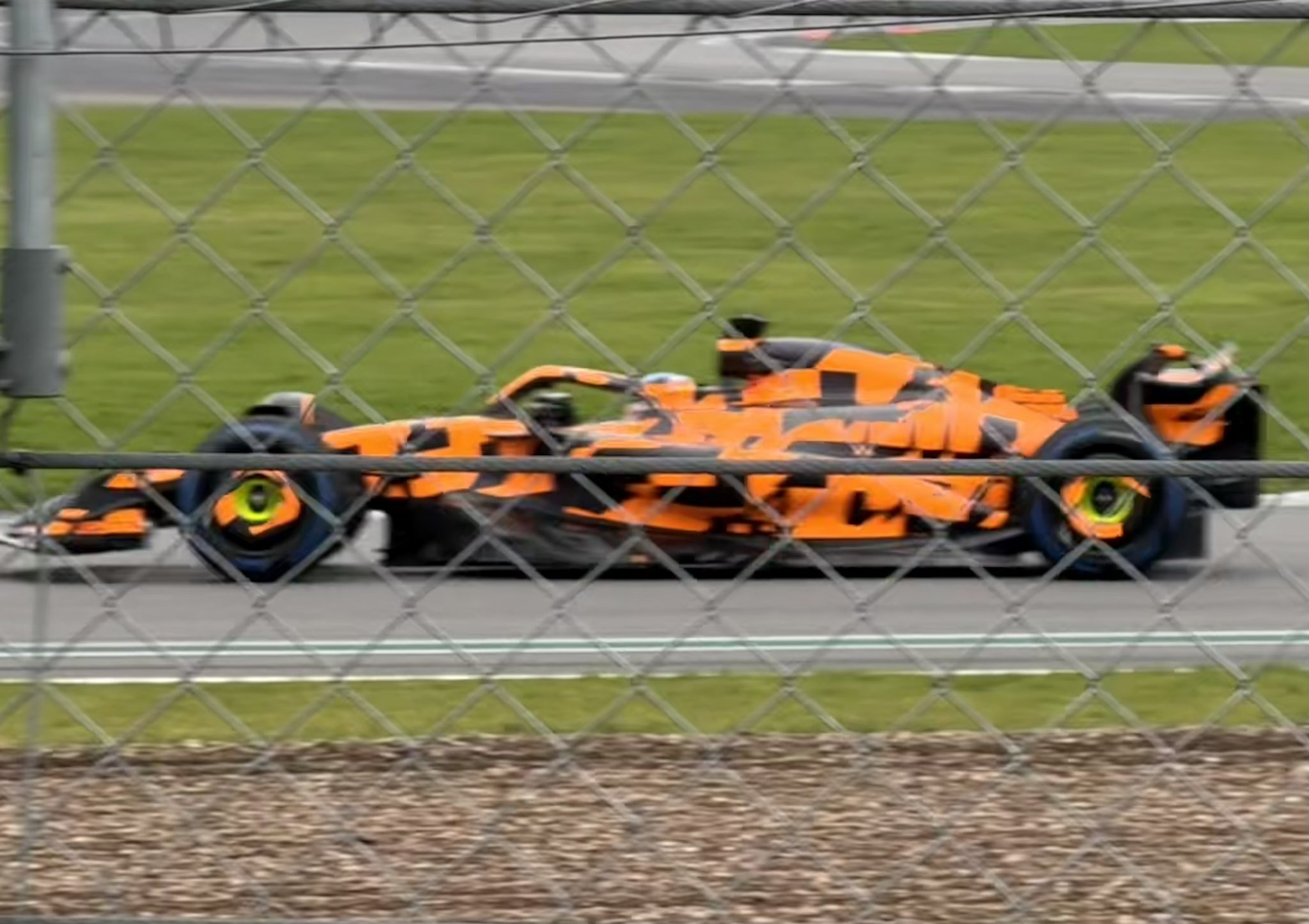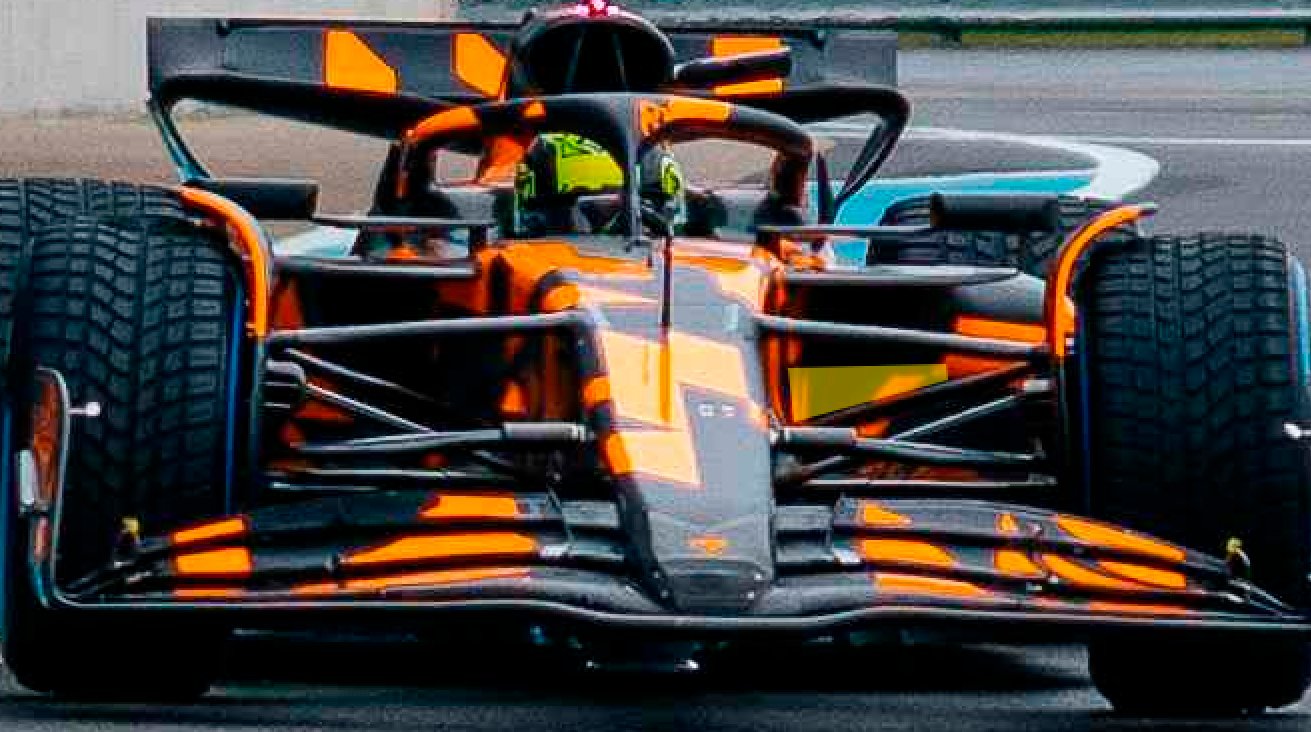- Login or Register
No account yet? Sign up

Is it me or is there something interesting going on with the rear suspension? Seems like the upper part (which I presume is part of the top wishbone? Edit: maybe that’s actually the pushrod) is kinda curved or something. I had a brief glimpse at the old car and it seems more conventional to my eyes but curious what folks think.
We don't have good enough shots to properly compare yet, but yes, I noticed one of the arms seems slightly curved too.f1316 wrote: ↑13 Feb 2025, 15:41Is it me or is there something interesting going on with the rear suspension? Seems like the upper part (which I presume is part of the top wishbone? Edit: maybe that’s actually the pushrod) is kinda curved or something. I had a brief glimpse at the old car and it seems more conventional to my eyes but curious what folks think.

Does this suggest the mid wing infront of the sidepod inlet now extends forward along the tub to finish in line with the front of the halo?f1rules wrote: ↑13 Feb 2025, 17:18Sarah Merritt
@Sareyware
https://pbs.twimg.com/media/GjrNbXrW0AI ... name=large

Wouldn’t that be illegal? I mean i doubt that the pushrod itself (rod actually) is bent. That would look like they made carbon shroud a bit curved? Shouldn’t rod covering be aero neutral?Emag wrote: ↑13 Feb 2025, 16:02We don't have good enough shots to properly compare yet, but yes, I noticed one of the arms seems slightly curved too.f1316 wrote: ↑13 Feb 2025, 15:41Is it me or is there something interesting going on with the rear suspension? Seems like the upper part (which I presume is part of the top wishbone? Edit: maybe that’s actually the pushrod) is kinda curved or something. I had a brief glimpse at the old car and it seems more conventional to my eyes but curious what folks think.

The p shaped inlet is about removing the messy boundary layer that has built up along the entire side of the chassis nose. You want to prevent the lossy air from entering the undercut and the p shaped inlet cleans it up. McLaren were the only top team not to have adopted some form of p shaped inlet last season, and from most angles it's quite clear the shape of the inlet.f1rules wrote: ↑13 Feb 2025, 18:26Im going out on a limp here, going against what most say but, i think they kept the same sidepod inlet shape.
With the more agressive anti dive with the rear attachment a lot lower, there is no way the are giving up that nice clean flow between the front suspension arms, for more cooling and a p shaped sidepod inlet.
https://pbs.twimg.com/media/GjrjgCfWsAA ... name=large


That's the mcl38. No cobra halo winglets, mcl38 shape SP inlets.
organic wrote: ↑13 Feb 2025, 18:31Recent post by McLaren Instagram shows the mcl38 rather than mcl39, just to get ahead of anyone confused about why the inlets are different in this shot
The p shaped inlet is about removing the messy boundary layer that has built up along the entire side of the chassis nose. You want to prevent the lossy air from entering the undercut and the p shaped inlet cleans it up. McLaren were the only top team not to have adopted some form of p shaped inlet last season, and from most angles it's quite clear the shape of the inlet.f1rules wrote: ↑13 Feb 2025, 18:26Im going out on a limp here, going against what most say but, i think they kept the same sidepod inlet shape.
With the more agressive anti dive with the rear attachment a lot lower, there is no way the are giving up that nice clean flow between the front suspension arms, for more cooling and a p shaped sidepod inlet.
https://pbs.twimg.com/media/GjrjgCfWsAA ... name=large
https://i.imgur.com/XfawcqK.jpeg
https://i.imgur.com/nfjKRk2.jpeg